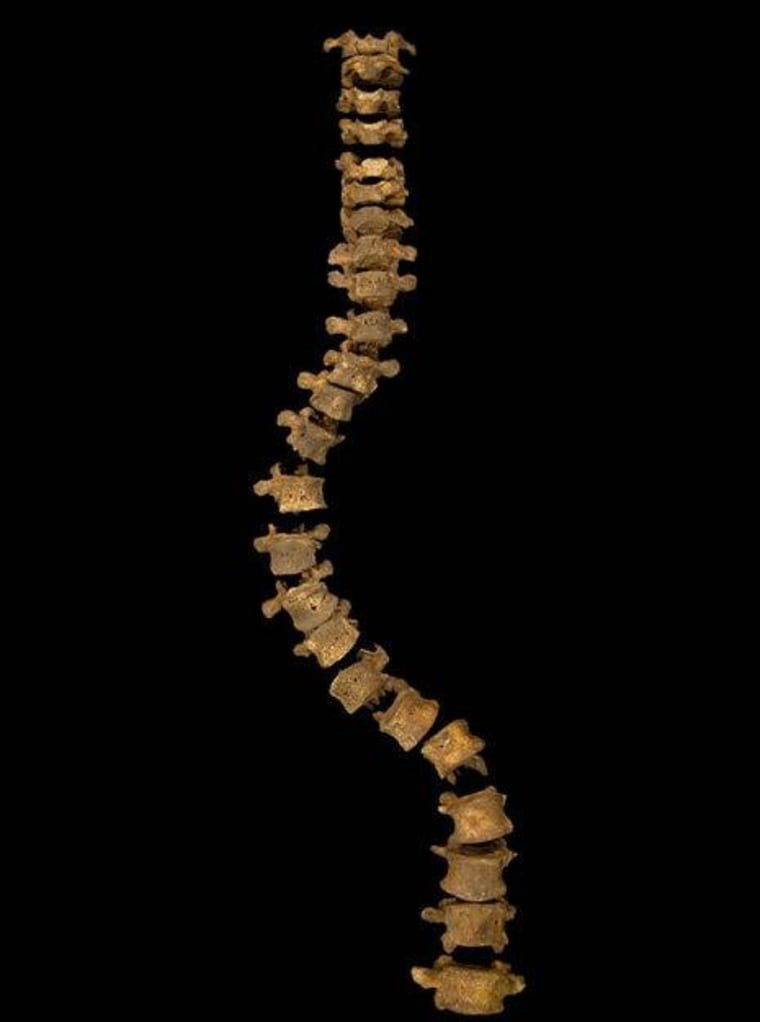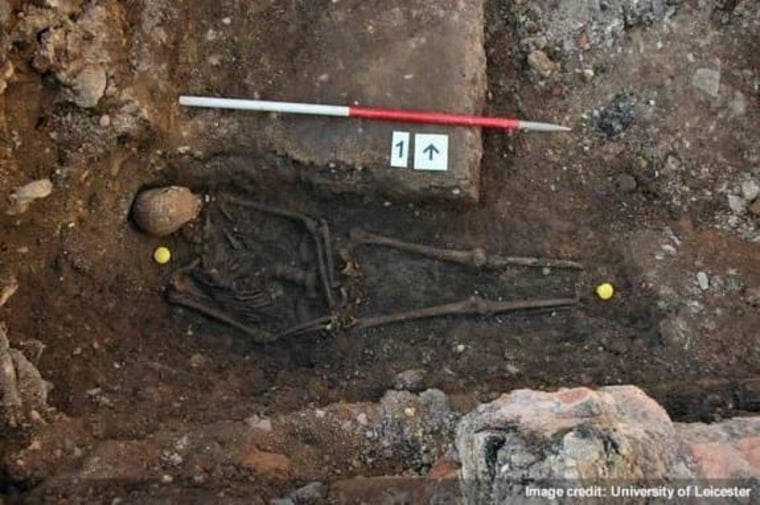By Jeanna Bryner
King Richard III may not have been a hunchback as portrayed by Shakespeare, but he did suffer from the spine-curving condition scoliosis, and he may have undergone painful medical treatments to straighten it out, scientists reported Friday.
Archaeologists announced in February that bones excavated from underneath a parking lot in Leicester, England, belonged to the medieval king. Since this confirmation, examination has continued on the bones and historical records, which have suggested the king was a control freak who had a friendly face.
Previous work showed King Richard III likely developed severe scoliosis, a painful condition, in his teen years. [Image Gallery: Photos Reveal the Discovery of Richard III]
Now, Mary Ann Lund, of the University of Leicester's School of English, has looked into the types of scoliosis treatments available when Richard III was alive, finding one would have been widely available for those who could afford it, such as the nobility.
Even so, there is no evidence on his bones to support the treatment.
"It wouldn't necessarily be possible to distinguish such signs," Lund told LiveScience. "Richard had idiopathic adolescent onset scoliosis, which means that the cause for it is not apparent, and that it developed after the age of about 10. So he would probably have been treated as an adolescent as well as during his adult life."

Traction treatment
Richard III was born in was born in 1452 and ruled England from 1483 to 1485, a reign cut short by his death at the Battle of Bosworth Field, the decisive battle in the English civil war known as the War of the Roses.
At the time, scoliosis was generally thought to be caused by an imbalance in the body's humors. "The theory of the humors would mean that this (treatment) would be geared towards Richard's individual humoral complexion," Lund wrote in an email. "Given the severity of his scoliosis, it's likely that treatment would have involved more than the topical application of ointments."
Some of the short-term scoliosis treatments available during the late medieval period would have been painful, Lund said. For instance, one such treatment, traction, relied on the same principle as the so-called Rack used in torture, she added. [Medieval Torture's 10 Biggest Myths]
For this treatment, rope would be tied under the patient's armpits and around his legs; these ropes would then be pulled at either end to stretch the person's spine.
Richard III would have been able to afford traction treatment, Lund said. In addition, his doctors would have been well aware of the method, which was detailed in treatises on medicine and philosophy by 11th-century Persian polymath Avicenna. (Avicenna's work seems to have been influenced by Greek philosopher Hippocrates, Lund said.) These treatises, including Avicenna's theories on using traction in scoliosis treatment, would have been widely read in Medieval Europe, Lund noted.
Avicenna's treatments for back disorders also included massage techniques done in Turkish baths and herbal applications. For longer-term care, patients were likely encouraged to wear a long piece of wood or metal to straighten their spines, Lund said.
"Hippocratic medicine was based on responding carefully to the individual, so without Richard's medical records we can only make conjectures," Lund wrote. Whether the possible treatment worked is also "impossible" to definitively answer, Lund said. "Historical accounts describe him as an active fighter in battle, so he was clearly able to do strenuous physical activity. On the other hand, it seems likely that the condition was painful and would have restricted his lung capacity," Lund wrote.
Finding Richard
After the king's death in battle, he was brought to Leicester and reportedly interred at the church of the Grey Friars, a location long lost to history. Even so, interest in the king led to some far-fetched grave tales about the burial's whereabouts, including one purporting the bones were thrown into the Soar River. "Other fables, equally discredited, claimed that his coffin was used as a horse-trough," Philippa Langley, a Richard III Society member, said in a statement.
Relying on historical records, University of Leicester archaeologists started digging beneath the Leicester City Council parking lot on Aug. 25. They soon found the church and a 17th-century garden marked by paving stones. Records suggest mayor of Leicester Robert Herrick built a mansion and garden on the medieval church site years after the king's death, reportedly placing in the garden a stone pillar inscribed with, "Here lies the body of Richard III sometime King of England."
Shortly thereafter, the team unearthed human remains, including both a female skeleton (possibly an early church founder) and a male skeleton with a spine curved by scoliosis. The male skeleton's skull was cleaved with a blade, and a barbed metal arrowhead was lodged among the vertebrae of the upper back.
Interest in the king has remained strong. Richard III enthusiasts, or Richardians, as they are called, have societies in the United Kingdom and the United States. The discovery of the bones of the medieval king has only swelled their passions.
"He's just such an enigmatic figure, and people are drawn to that, because there's such mystery about him," Molly McAleavey, a Denver-based member of the Richard III Foundation, one of the societies dedicated to the king, told LiveSciencein March. "What was he like, really? What is the truth?"
Little bits of this truth continue to spill out from the world of archaeology and social sciences.
Follow Jeanna Bryner on Twitter and Google+. Follow us @livescience, Facebook and Google+. Original article on LiveScience.com.
- 8 Grisly Archaeological Discoveries
- In Photos: 'Alien' Skulls Reveal Odd, Ancient Tradition
- Top 10 Weird Ways We Deal With the Dead
Copyright 2013 LiveScience, a TechMediaNetwork company. All rights reserved. This material may not be published, broadcast, rewritten or redistributed.
